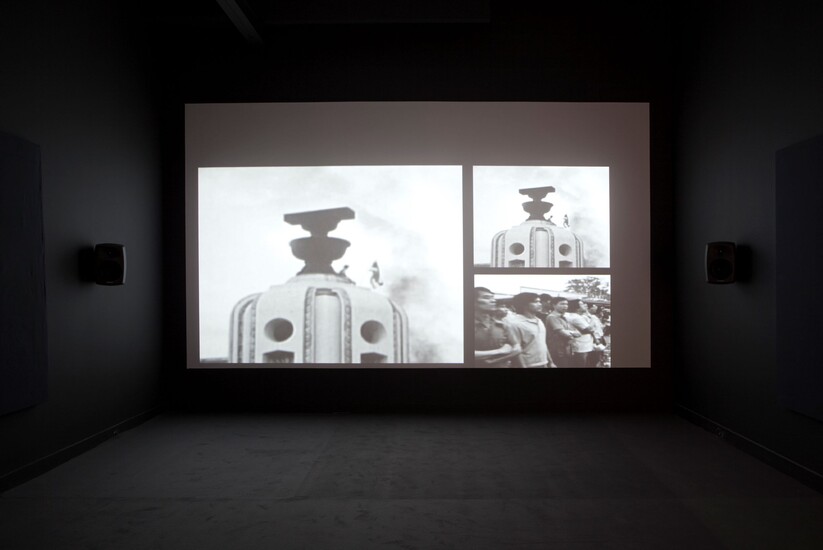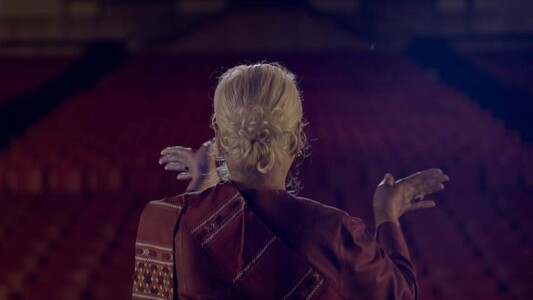The elements of Rungjang’s presentation at documenta 14 are built on oral and archival materials, which highlight the complexities of ideological conflicts as well as their subjectivity and malleability in how they can be read or narrated. The works seek to deconstruct what monuments perform, which narratives feed the nation-state, and, ultimately, the space we have agreed to call history.
This installation of oil on paper works depicting newspaper spreads and a digital video unifies two significant events that took place in 1973 just one month apart in Bangkok and the Greek capital—the Thammasat University uprising (October) and the Polytechnic Uprising (November), respectively; both against military dictatorships.
The popular uprising of October 14, 1973 saw more than 400,000 people march against the military junta from Thammasat University to the Democracy Monument. To win public sympathy and support, the students based their political activities on the same foundations of legitimacy used by the military: the triumvirate of nation, religion, and monarchy, and subverted them against the junta. The uprising ushered in a period of extreme unrest and violence with the absolute monarchy’s and the military’s growing fear of communism resulting in the Thammasat University massacre on October 6, 1976.
Similarly, the already highly politicized space of the National Technical University became the nexus of the Athens Polytechnic uprising in November 1973, which sought to overthrow the military junta in Greece. Participants in the massive and bloody demonstration have intimated that their protest was inspired by the Thammasat University uprising, of which they learned through radio and oral accounts.
Detail pictures:






